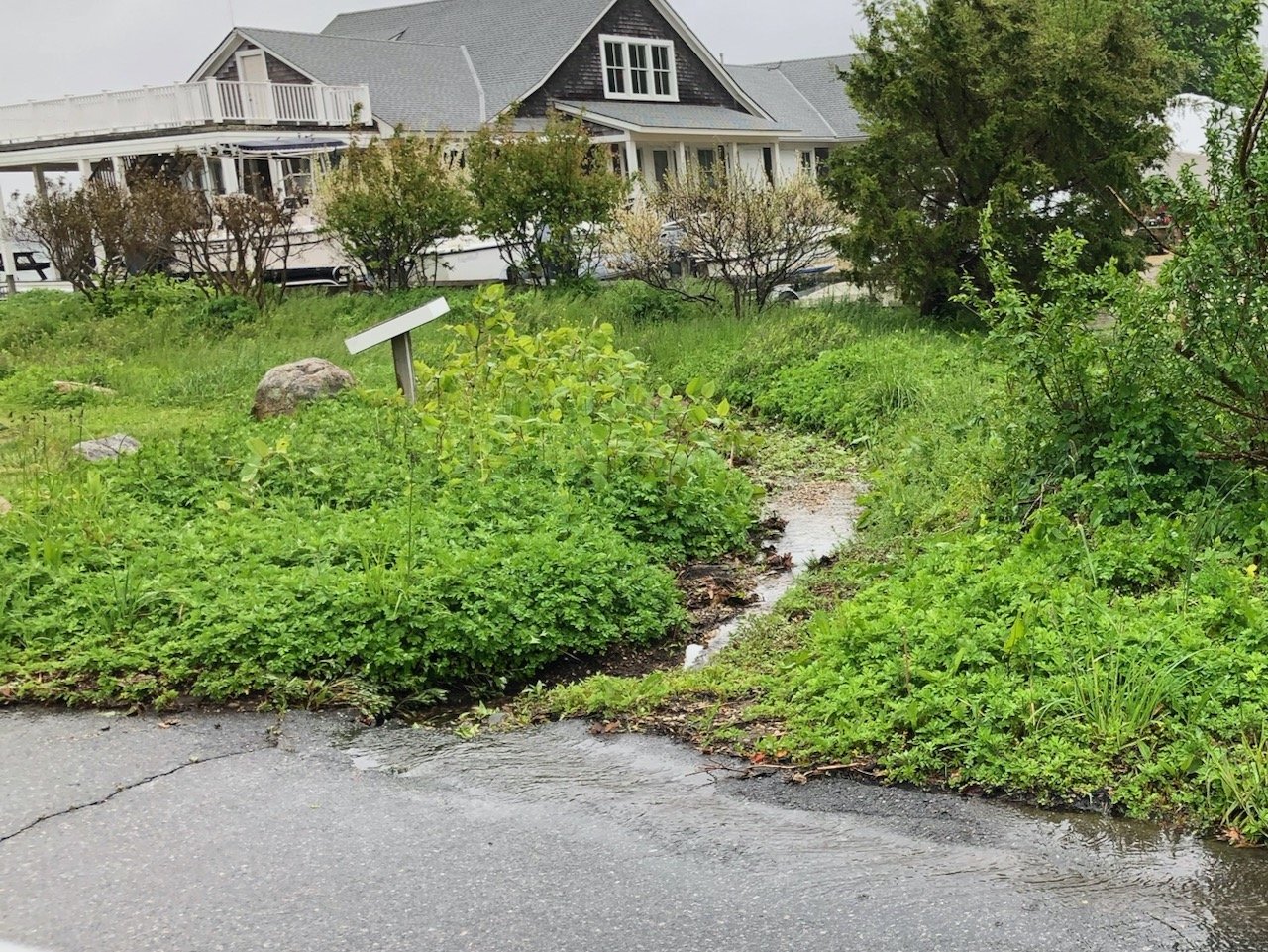
Owen Little Way Bioswale
For an update on the status of the Bioswale, click on “Happenings” at the top of this page.
When stormwater runs off impervious surfaces (including compacted soils), it accumulates pollutants and delivers them to existing water bodies, either directly or via a storm drain. Stormwater pollutants typically include sediment; nutrients (nitrogen and phosphorus); bacteria from animal waste; and oil, grease, and heavy metals from cars. Stormwater also causes increased flooding resulting in erosion.
However, if captured by a rain garden, the damaging effects of stormwater are mitigated.
The rain garden functions as a soil and plant-based filtration device that removes pollutants through a variety of physical, biological and chemical treatment processes.
Why are rain gardens important? As towns grow, increased stormwater run-off from impervious surfaces becomes an even greater problem. By reducing stormwater runoff, rain gardens can be a valuable part of changing these trends. While an individual rain garden may seem like a small thing, collectively they produce substantial neighborhood and community environmental benefits. They also provide a valuable habitat for birds, butterflies and many beneficial insects.
For a brief description of TWI’s Owen Little Way bioswale, additional references about rain gardens, and a list of suitable rain garden plants, click here.
To view slides from a presentation by Kate Venturini, Landscape Restoration Specialist at the University of Rhode Island Landscape Restoration Program, who spoke at a TWI-sponsored workshop on bioswales, click here.
They’re called rain gardens, bio-swales or simply swales, but they all do the same thing. These bowl-shaped landscaping wonders are designed to capture and absorb rainfall or snowmelt that is collectively referred to as “stormwater.”
Click above to watch a video about the construction of the Owen Little Way rain garden!
